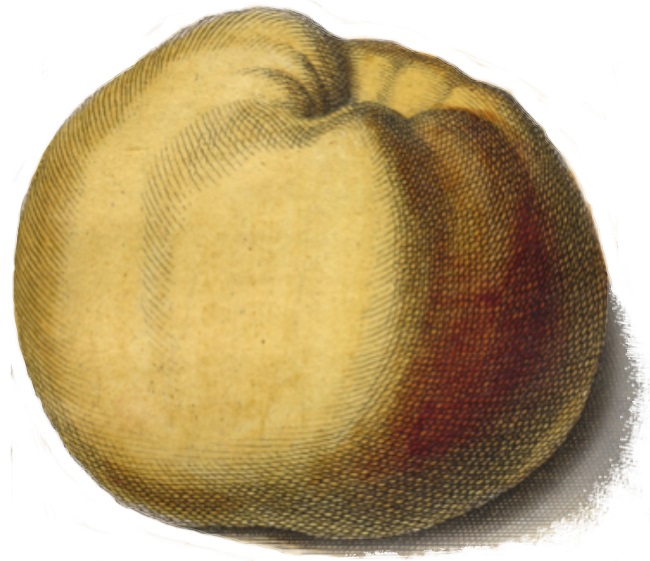An image of the Witte Wijn as described by Knoop in Fructologia
For the first time in hundreds of years the progeny of the first apple picked at the Cape is back on South African soil.
Although still in quarantine until 2019, the Witte Wijn Appel, the first apple recorded in the diary of the Dutch governor at the Cape as picked in the Company’s Garden on April 17, 1662, has been found in Holland and imported back into South Africa by Hortgro, the pome industry research support body and Tru-Cape Fruit Marketing, the largest exporter of South African apples and pears selling produce into more than 104 countries.
Tru-Cape began noting and celebrating April 17 as the official birth of the apple industry, today one of the major Western Cape employers, after publishing a book, Apples in the Early Days at The Cape, and replanting heritage apple and pear varieties. As a company responsible for selling more than half of all the apples and pears grown in the Western Cape, Tru-Cape also sees itself as the custodian of South African apple and pear genetics for future generations.
Tru-Cape managing director Roelf Pienaar says that when he took over operations in 2013, Tru-Cape new variety expert Buks Nel and Tru-Cape quality assurance manager, Henk Griessel had already launched their book and planted the first Heritage Orchard. “I knew then that the company was as serious about heirloom varieties as it is about developing new and improved apple and pear strains and when the opportunity arose to import the budwood for the original South African apple, the Witte Wijn Appel, it was an easy choice.”
Griessel explains how they first knew about the Witte Wijn: “Hermann Johann Knoop in Fructologia, described the fruit in1763 (freely translated from the Dutch) as a large, irregular shape and rough to look at although he added the skin was smooth, coloured red, but sometimes green or yellowish on the one side. “The flesh is soft, very juicy with a good taste. It is a good-looking apple and very tasty when stewed. It is also suitable for making apple wine. The tree is strong and bears well when it becomes older. The Witte Wijn Appel very much resembles the shape of its red namesake, but is of rather a whitish green. The taste is also very similar, but not as flavoursome and therefore of less value. It makes a good tree that is reasonably precocious.”
Buks Nel adds that tracking the fruit down was a long journey but everyone at Tru-Cape is looking forward to finally planting the trees in the Tru-Cape Heritage Orchard next year at Oak Valley in Grabouw and, hopefully, in The Company’s Garden from where it was first picked.
Hortgro’s Executive director Anton Rabe said: “The impact on and contribution of the apple industry to the modern economy of the Western Cape is huge. This massive industry, which today contributes to more than 45,000 jobs, food security, rural stability, infrastructure and foreign earnings, was however built on a small and nearly forgotten historical event of 356 years ago. We are really proud and privileged to participate in this initiative to bring the historical plant material back to South Africa and will continue to honour the roots of our industry for many years to come.”








